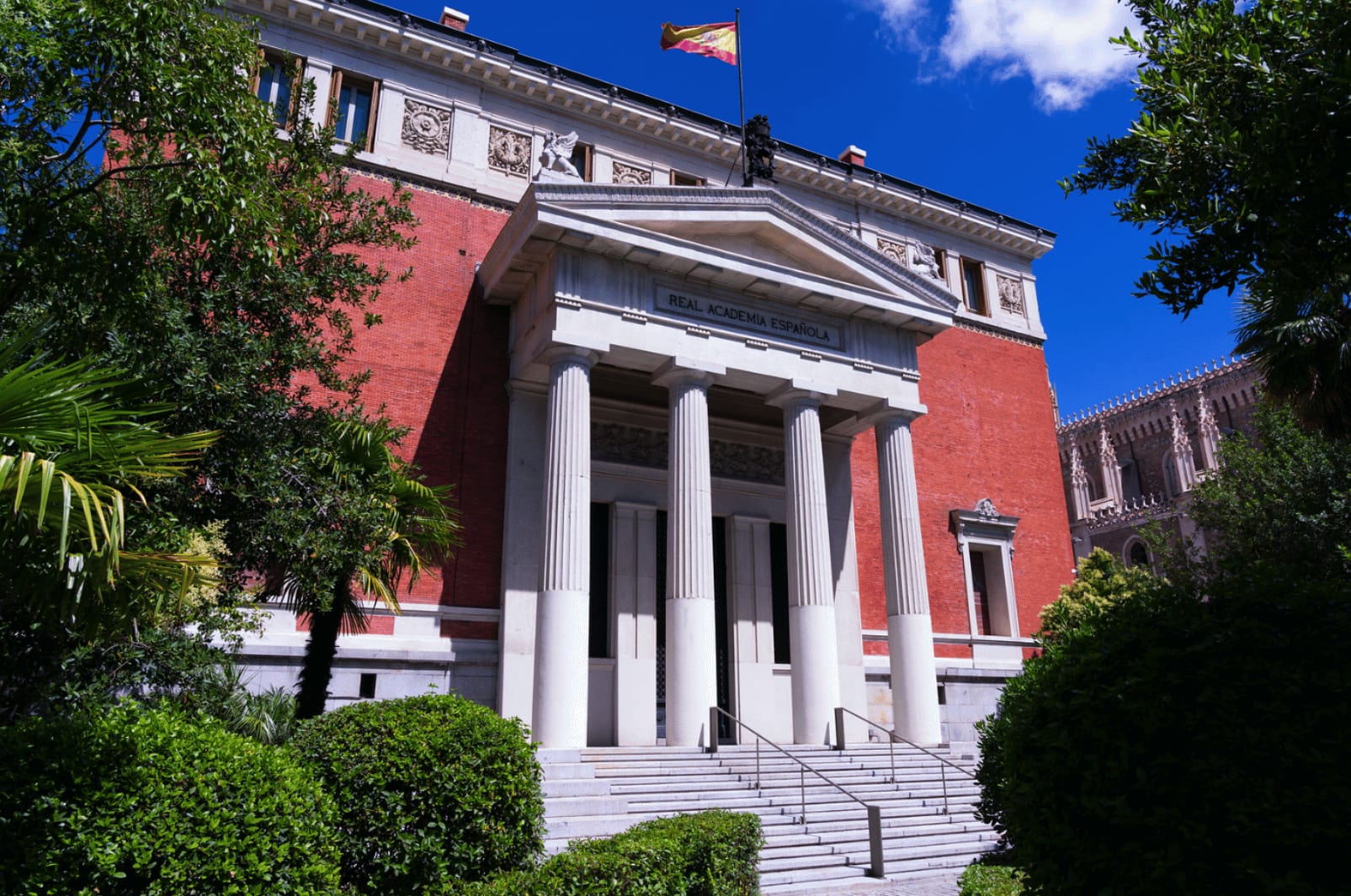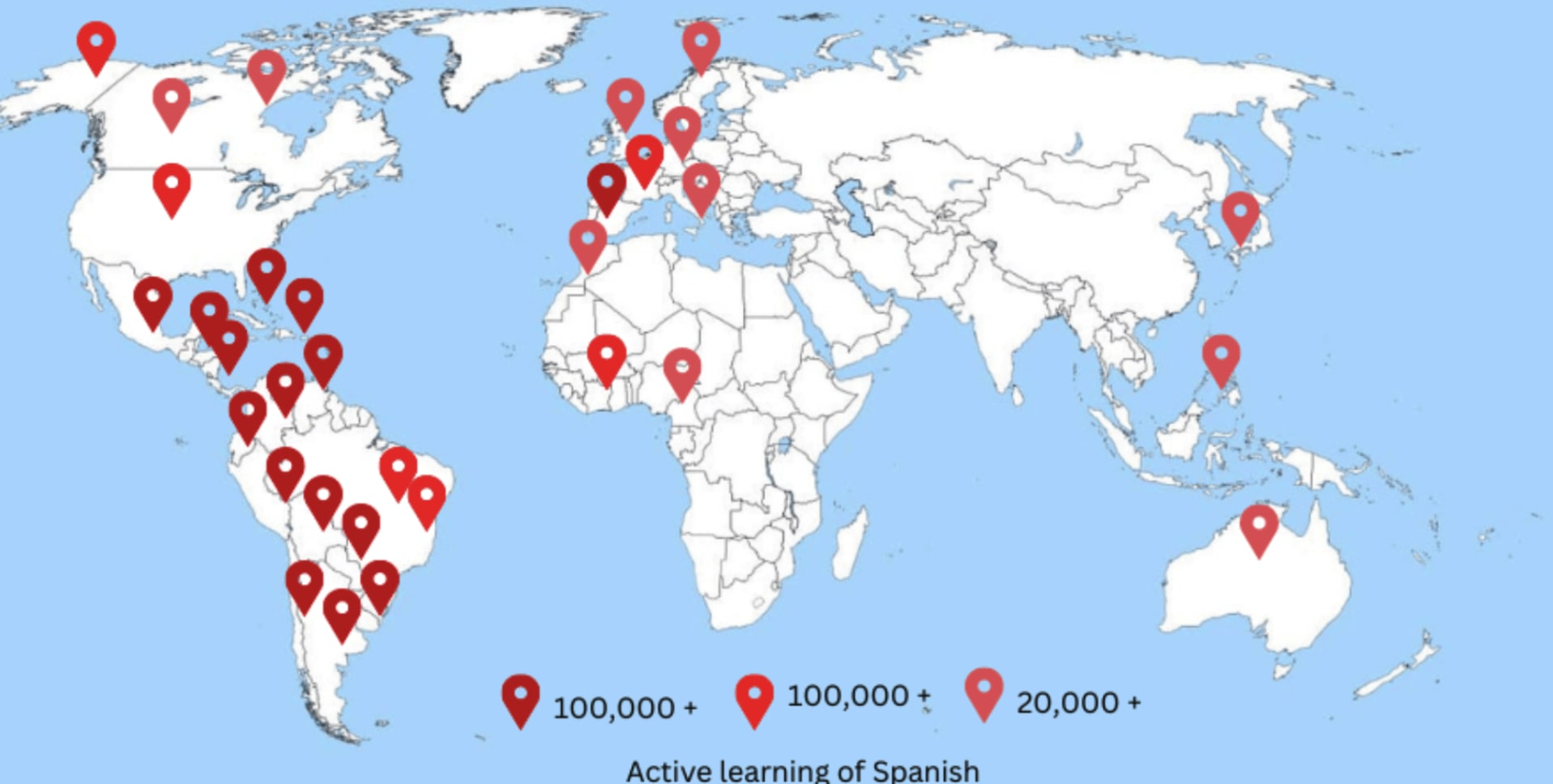History of The Spanish Language 101: From the Romans to Today!
December 7, 2022
Win a FREE Trip to Spain!
Exciting Announcement! For the first time, we're thrilled to offer exclusive trips to the heart of Spain - an experience like no other. This isn't your typical tourist journey; it's a unique opportunity to immerse yourself in authentic Spanish culture, alongside real locals and our passionate team.
But there's more! Simply by requesting information about this amazing trip, you'll be entered into a special draw to win a Fully Paid Trip to Spain for Two. And that's not all - everyone who inquires will receive an exclusive bonus gift, valued at $500, available only now.
Ready to Discover the Real Spain?Click Here ↑ to Request Information & Enter the Draw!
Some say the Spanish Language is a modern continuation of spoken Latin (called Vulgar Latin), but its origins have many other influences.
Did you know that Spanish is spoken in Spain, Spanish America, Western Sahara, Equatorial Guinea, and parts of the Philippines, being the official language in most of these territories?
In this article, I’ll explain everything about the origins and history of the Spanish language and how it evolved to what it is today, being one of the most important languages spoken worldwide. (And this tendency will only continue to increase!)
After this, you’ll see why Spanish is the next language you need to learn.
Table of Contents ▼ ▶
What is the origin of the Spanish Language?

The Spanish language originated in the Iberian Peninsula as a dialect of Latin, nowadays called “Vulgar Latin.” Yet, the dominant dialect we consider dominant in Europe is the Castellano, also called Spanish Castilian.
During the Roman Empire, the Latin language was the official language of Hispania (the name they used to use for the peninsula). Although Celts and Iberians began to mix with the local languages of inhabitants, in the end, the language had its unique characteristics.
After the Visigoths, the Muslim Moorish conquerors arrived in the 8th century and contributed more than 4,000 Spanish words from Arabic and some others from the Berber. We can still see in Spain cultural influences in the designs, art, and architecture, most specifically in the beautiful cities and towns in Southern Spain. I suggest you visit the following articles to see them for yourself:
The Amazing History of Spanish Art and Its Influential Periods
The Spanish Architecture and the 21 Wonderful Mediterranean Buildings
Surprisingly, Arabic did not influence the sounds or phonology in Spain. The renowned Linguist Mark Damen explores one aspect of this evolution over the years in a fascinating TEDx talk if you’d like to learn more about the topic!

Evolution of the Spanish language
As I mentioned earlier, Vulgar Latin became more important after the fall of the Western Roman Empire. In this context, certain deformations of Latin arose that gave rise to Castilian Romance, which spread from the region of the Kingdom of Castile to the whole Peninsula during the Middle Ages.
The Greek and Germanic also influenced the first version of Spanish. Later, King Alfonso X promoted Castilian as a language from the year 1200 onwards. He wrote original works in Castilian and translated many others, which meant a significant advance in defusing the language. Another milestone in history that helped to consolidate Castilian as a language was the conquest of Granada by the Catholic Monarchs. It was also in 1492 when Antonio de Nebrija created the first treaty that studied the grammar of a European language called Grammatica.

Also, the language kept spreading throughout much of the American continent with the arrival of Spain with Columbus, resulting in numerous dialects and variants with differences in pronunciation and vocabulary. In addition, the influence of other native languages and English have contributed to the different variations of the language.
“La Real Academia Española”

The Royal Spanish Academy (La Real Academia Española, RAE in Spanish) is the institution in charge of ensuring the correctness of the Spanish language. It was founded in 1713 and had one main purpose: standardizing the language. It helped many academics, professors, writers, and others regularize the use of accents to denote syllabic stress that doesn’t follow the pronunciation rules, for example.
Later in 1726-1739, they produced the first dictionary in six volumes. As Spanish differs so much from the past, other Spanish-speaking countries have academies to keep accountability on their regional characteristics. It has grown very much and has an official international reputation. Nowadays, the RAE is accompanied by 21 other academies in the Americas and the Philippines.
“Ensure the evolution preserves the genius of the language since it has been consolidated over the centuries, as well as establishing the criteria of propriety and correctness while contributing to its splendor. To achieve these goals, it will study and promote studies on the history and present of Spanish, disseminate literary writings, especially classics and non-literary writings, that it deems important for the knowledge of such issues, and will try to keep alive the memory of those who, in Spain or America, have cultivated our language with glory”.
-RAE
Countries that speak Spanish today

Spanish is considered to be a growing language. Currently, 21 countries have Spanish as an official language, and these are the following:
| Countries with Spanish as an official language | # of Hispanophones | Continent |
|---|---|---|
| Mexico | 123 982 528 | America |
| Colombia | 49 608 396 | America |
| Spain | 46 659 302 | Europe |
| Argentina | 44 494 502 | America |
| Peru | 32 162 184 | America |
| Venezuela | 31 828 000 | America |
| Chile | 17 574 003 | America |
| Guatemala | 17 383 245 | America |
| Ecuador | 16 755 452 | America |
| Cuba | 11 616 004 | America |
| Bolivia | 11 217 864 | America |
| Dominican Republic | 10 766 998 | America |
| Honduras | 9 126 229 | America |
| El Salvador | 7 415 479 | America |
| Paraguay | 7 052 983 | America |
| Nicaragua | 6 279 712 | America |
| Costa Rica | 5 003 393 | America |
| Panama | 4 158 783 | America |
| Puerto Rico | 3 615 086 | America |
| Uruguay | 3 467 397 | America |
| Equatorial Guinea | 1 267 689 | Africa |
| Belice | 225 584 | America |
They are called Hispanic countries! You can learn everything about them by reading the following articles:
Hispanic Countries: A complete list guide to get it right!
Spanish in Spain vs in Latin America: 5 Differences to English speakers
The influence and relevance of Spanish
Spanish is one of the most important languages in the world, considering that there is a large percentage of Spanish speakers worldwide. On top of this, this trend continues to increase, and according to forecasts and studies carried out so far, Spanish speakers are expected to exceed 7.5% of the world’s population by the year 2030. All these figures only go to show that the Spanish language is on an unstoppable rise and that it is in better health than ever.
Here are the countries that speak Spanish but not as an official language:
| Countries where Spanish is not an official language | # of Hispanophones | Continent |
|---|---|---|
| United States | 57 398 719 | America |
| Morocco | 7 000 000 33 | Africa |
| Brazil | 6 676 000 | America |
| Italy | 5 704 863 | Europe |
| Philippines | 2 200 000 | Asia |
| France | 2 000 000 | Europe |
| Canada | 909 000 | America |
| Israel | 200 000 | Asia |
| Andorra | 55 287 | Europe |
| Gibraltar | 28 500 | Europe |
It is also worth noting that the Spanish language on the Internet has become more widespread. It is the second most used language on leading social networks such as Facebook and Twitter.
Sharing a language increases exports between Spanish-speaking countries, which means that more and more agreements and treaties will be signed between them for trading products and services, resulting in better wealth for each of these countries.
Every time more people worldwide become aware of its importance, they start learning Spanish! Which is not very difficult to learn (depending on your mother tongue) but here I leave you the best articles so you can know which languages are similar to Spanish with some tricks and tips to make the best out of your learning experience:
The 6 Languages Similar to Spanish that are Easy to Learn
How long to learn Spanish? 5 Tips to NOT sound like an Idiot
Why is Spanish hard? 9 Reasons why this language is so difficult!
5 Curious facts about the Spanish Language
- Spanish is the fourth most powerful language in the world, after English, French, and Chinese.
- The contribution of Spanish-speaking countries as a whole to the world’s GDP is 6.9%.
- It is the fastest language to pronounce. To know the speed of a language, they base on the number of syllables an average speaker can pronounce per second. In this sense, Spanish is the fastest language in the world. It shares the position with the Japanese. On the contrary, German and Mandarin are the slowest languages to pronounce.
- Initially, the Spanish language had the acute accent that we use today and the circumflex accent, which is still preserved in other Romance languages such as French.
- The famous “ñ” originally came from another “n” written over the larger one as an abbreviation. Over time it would flatten to the shape we know today, called virgulilla.
Spanish is the official language of most of the autonomous communities in Spain. However, other official languages predominate in the country as well, such as Catalan, Basque, and many others, making our culture very diverse. It is worth visiting and experiencing this incredible mix of culture and traditions yourself!












